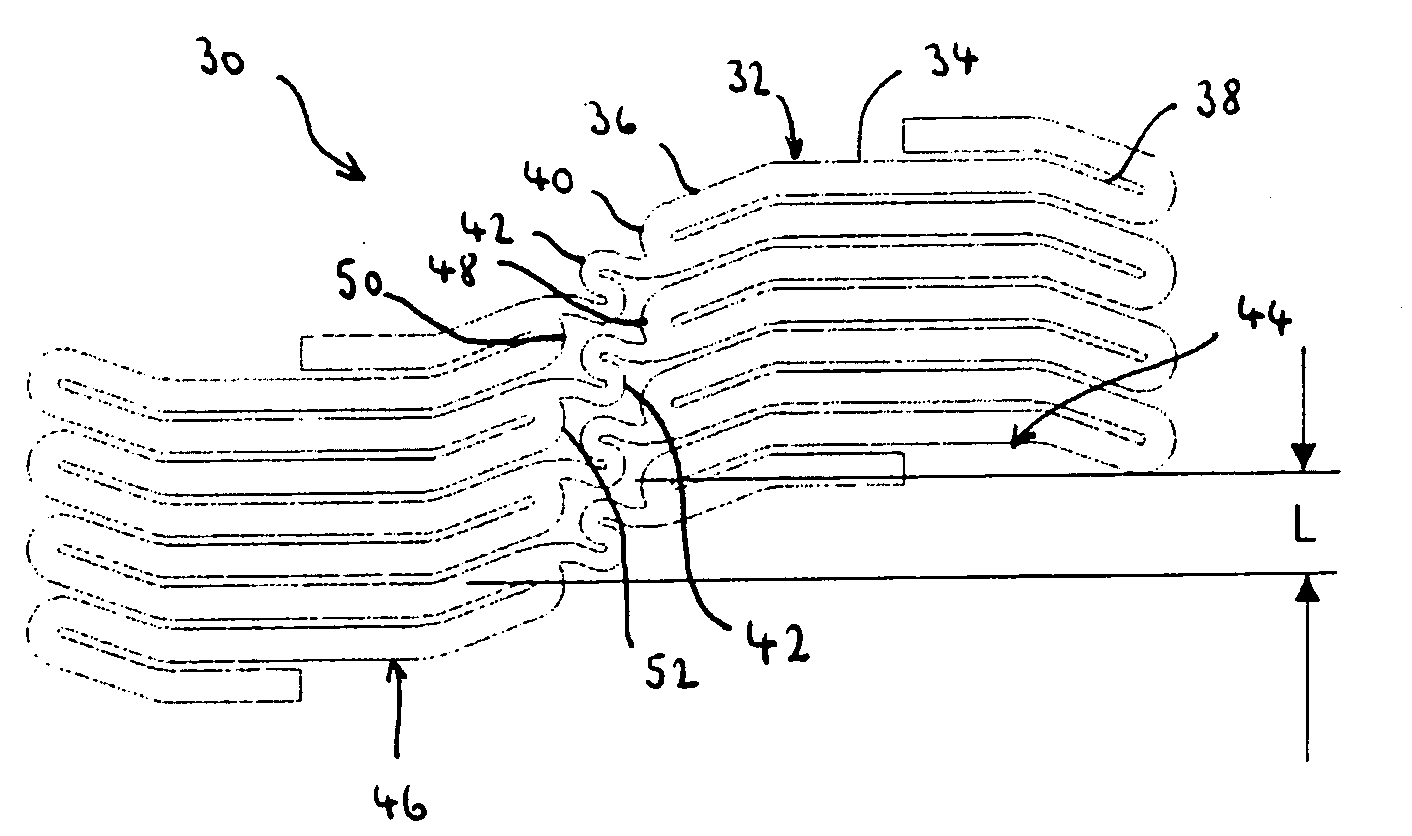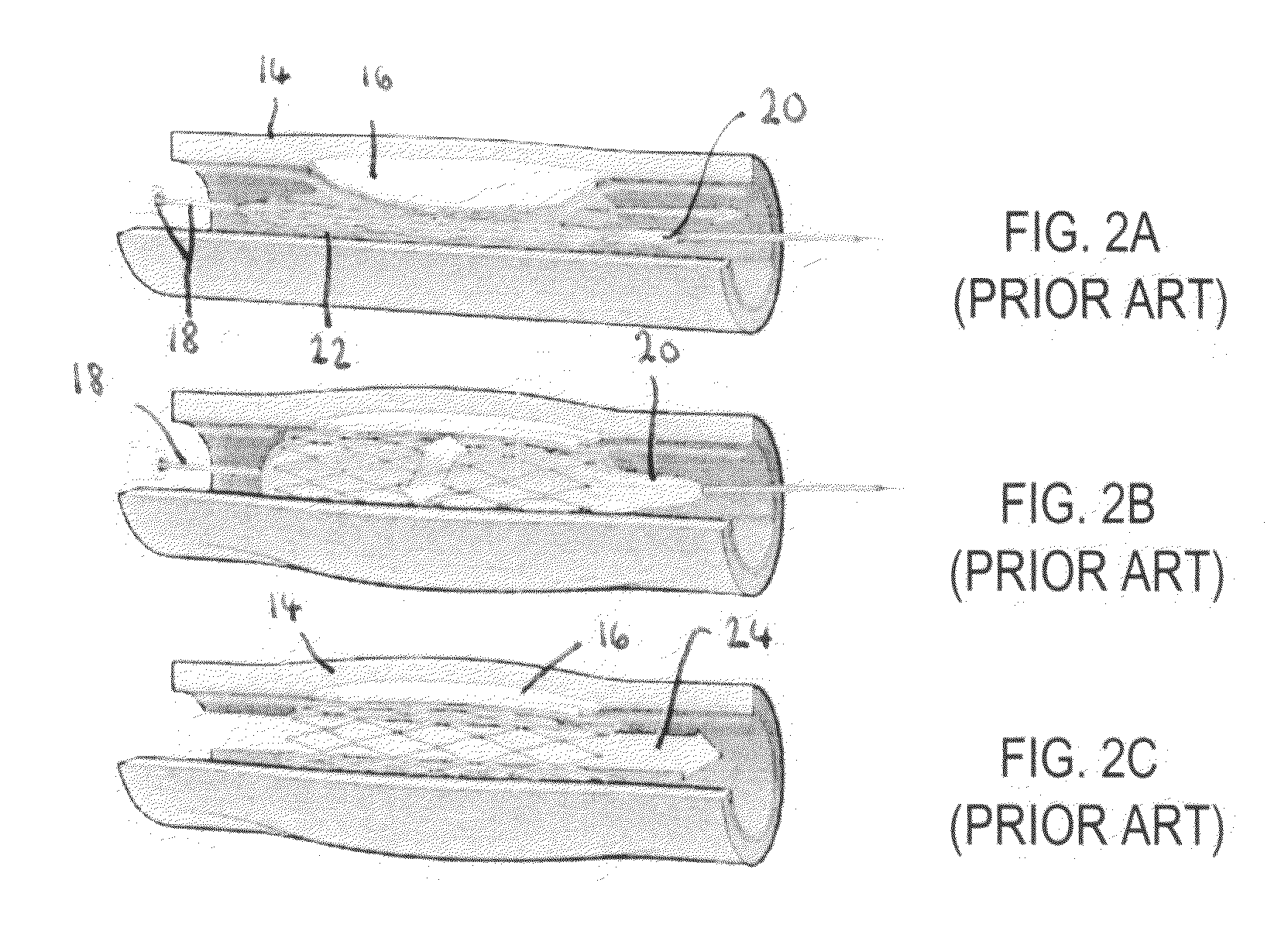Flexible stent with elevated scaffolding properties
a flexible, scaffolding technology, applied in the field of medical devices, can solve the problems of limited support to the arterial wall, negative influence of the scaffolding support, and neurologic impairment, and achieve the effect of increasing the length of translation of the junction bend and the degree of flexibility of the stent, and facilitating the insertion of the sten
- Summary
- Abstract
- Description
- Claims
- Application Information
AI Technical Summary
Benefits of technology
Problems solved by technology
Method used
Image
Examples
Embodiment Construction
[0033]The present invention relates to stent designs that provide an elevated degree of scaffolding to a bodily vessel while retaining a highly flexible structure. A preferred application of the present invention relates to closed cell stents, in particular, carotid stents, for which lesion scaffolding and the capability of conforming to tortuous anatomies are key design features.
[0034]Detailed descriptions of embodiments of the invention are provided herein. It is to be understood, however, that the present invention may be embodied in various forms. Therefore, the specific details disclosed herein are not to be interpreted as limiting, but rather as a representative basis for teaching one skilled in the art how to employ the present invention in virtually any detailed system, structure, or manner.
[0035]Referring to FIG. 4, a stent 26 constructed according to the principles of the present invention includes an essentially tubular body 28 expandable from a contracted delivery config...
PUM
 Login to View More
Login to View More Abstract
Description
Claims
Application Information
 Login to View More
Login to View More - R&D
- Intellectual Property
- Life Sciences
- Materials
- Tech Scout
- Unparalleled Data Quality
- Higher Quality Content
- 60% Fewer Hallucinations
Browse by: Latest US Patents, China's latest patents, Technical Efficacy Thesaurus, Application Domain, Technology Topic, Popular Technical Reports.
© 2025 PatSnap. All rights reserved.Legal|Privacy policy|Modern Slavery Act Transparency Statement|Sitemap|About US| Contact US: help@patsnap.com



